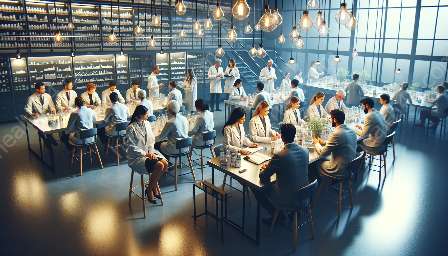Food styling is not just about the presentation of food; it's also about how the food is perceived through various media. The role of lighting in food styling is crucial, as it can dramatically enhance the visual appeal of food, impacting both its presentation and critique. Understanding the principles and techniques of lighting in food styling can elevate the art of food presentation and writing.
The Impact of Lighting on Food Styling
Lighting plays a significant role in shaping the visual perception of food. It can affect the color, texture, and overall appearance of food, creating a captivating aesthetic that entices the viewer. Just as a well-lit stage can bring out the best in a performance, proper lighting can accentuate the best features of food, making it more visually appealing.
Quality of Light
The quality of light used in food styling is essential. Natural light, for instance, provides a soft and diffused illumination that can highlight the natural colors and textures of food. Artificial lighting, on the other hand, allows for greater control over the intensity and direction of light, enabling food stylists to create specific moods and atmospheres.
Color Representation
Lighting can significantly impact the way colors are represented in food styling. The color temperature of light can influence the perceived warmth or coolness of the food, affecting the overall mood and appeal. By understanding the principles of color temperature and using lighting techniques effectively, food stylists can manipulate how the colors in the food are perceived, creating a visually enticing composition.
The Art of Lighting in Food Critique and Writing
When it comes to food critique and writing, the role of lighting is equally essential. A dish's visual appeal can greatly influence how it is perceived and described by critics and writers. Well-lit food not only looks more appetizing but also provides an excellent subject for detailed and evocative descriptions. Furthermore, the play of light and shadow can add depth and dimension to the visual narrative of the food.
Enhancing Presentation in Food Critique
Properly lit food can significantly enhance its presentation in food critique. The interplay of light and shadow can add interest and drama to the visual representation of food, creating captivating imagery that entices both the eye and the palate. Food critics can use lighting as one of the factors to evaluate the presentation and overall appeal of a dish, contributing to a more comprehensive critique.
Descriptive Writing and Lighting
Lighting not only affects how food looks but also influences how it is described in writing. Vivid and descriptive writing about food requires a keen understanding of how lighting can bring out the best in food. Through the use of evocative language and sensory details, writers can capture the effect of lighting on food, enhancing the reader's sensory experience and appreciation of the culinary composition.
Conclusion
In food styling, lighting is a pivotal element that can transform the visual appeal of food, influencing its presentation and critique. Understanding the impact of lighting on color representation, texture, and overall aesthetic can empower food stylists to create visually stunning compositions. Moreover, in food critique and writing, the role of lighting is equally vital, shaping the narrative and perception of food through evocative descriptions and visual appeal. By delving into the art and science of lighting in food styling, professionals can elevate the storytelling of food, enriching the culinary experience for both creators and consumers.


